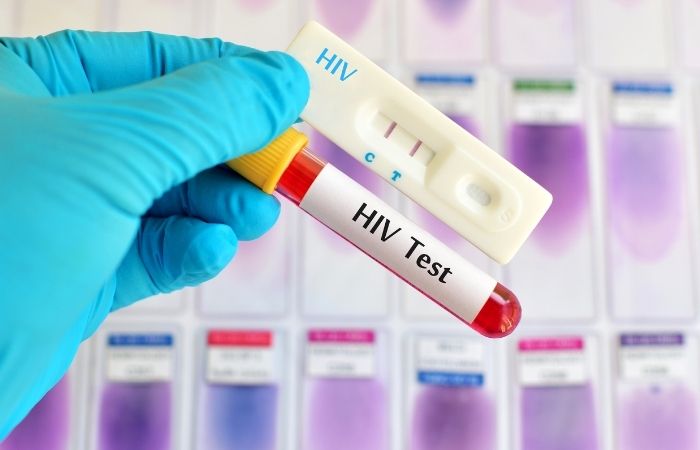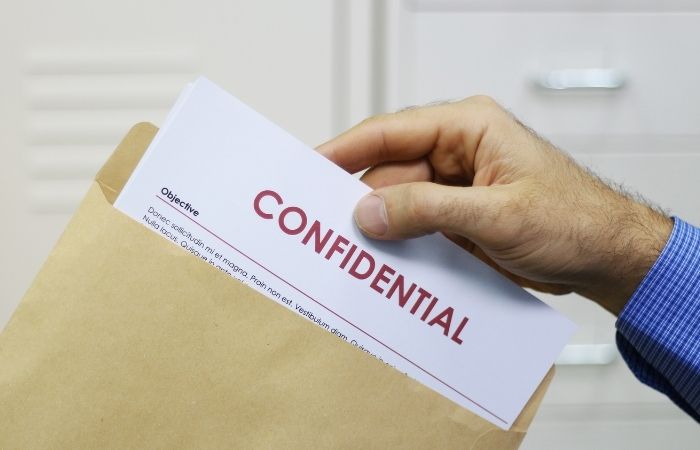How Accurate Are Chlamydia At Home Tests?
Quick Answer: At-home STD tests are accurate when used correctly and within the recommended window period. Faint lines, invalid results, and unclear instructions are common worries, but most have simple explanations and clear solutions.
“Can I Really Trust a Test I Did at Home?”
Chris, 28, ordered an at-home chlamydia test after a casual hookup left him with a strange discharge and a lot of guilt. He followed every step in the manual, dropped the urine sample into the cassette, and waited. The result came back negative. Relief flooded in, but also doubt. Was it too soon? Did he do it wrong?
This is one of the most common questions we see: Can I trust this? According to multiple studies, rapid at-home STD tests, especially those using NAAT (nucleic acid amplification test) technology or antigen-based cassettes, have high accuracy when used properly. Most have sensitivity and specificity rates above 90%, often approaching 99% when used in the right window.
But timing matters. And so does following the instructions exactly. A small mistake like shaking the test too much or using too little sample volume can throw off the results. But if the window period has passed and the test is used correctly, you can trust the outcome more than you think.
When Accuracy Peaks: Understanding the STD Testing Window
Think of your immune system as a delayed reporter. It takes time for infections to reach detectable levels, this is called the “window period.” Testing too early may produce a false negative, not because the test is bad, but because your body hasn’t built up enough signal yet.
| STD | Test Type | Recommended Window | When to Retest |
|---|---|---|---|
| Chlamydia | NAAT / Rapid Antigen | 7–14 days after exposure | 3–4 weeks if symptoms continue |
| Gonorrhea | NAAT / Rapid Antigen | 7–14 days | 3–4 weeks |
| Syphilis | Rapid Antibody | 3–6 weeks | 12 weeks for full clarity |
| HIV | Rapid Ag/Ab or RNA | 2–6 weeks | 12 weeks if first test was early |
Table 1. Window periods by STD type. Testing too early can result in a false negative, even with high-quality tests.
Here’s what this means in practice: If you had unprotected sex two days ago and you're testing now, your result may not be reliable yet. But if it's been over two weeks, you're likely in the accuracy zone. Even then, if symptoms develop later, a retest makes sense.
“What If I See a Faint Line?”
Let’s talk about the line of doom. Or as one Reddit user called it: the “shadow of panic.” A faint line on a rapid STD test doesn’t always mean positive, but it never means nothing. Most rapid tests follow a principle similar to pregnancy tests: any line in the test region can indicate the presence of the target antigen or antibody.
Maya, 22, took a trichomoniasis test after experiencing unusual odor and discharge. The control line was bold. The test line? Barely there. She panicked, Googled for hours, and finally called a nurse hotline. They told her faint means present, and she should confirm with a clinic or retest in a few days.
Manufacturers generally say this: a visible line, no matter how faint, is a positive result. Lighting, sample concentration, and test strip variation can affect intensity, but if the line appears in the test region, assume it’s reactive. The smart move? Retest using a new kit, or confirm with a lab-based method.

People are also reading: Why Syphilis Is Spiking Among Straight Men, and Why It Matters
“I Think I Peed Wrong. Is My Result Still Valid?”
The short answer is: Maybe. Long answer: It depends on the kind of test and where the mistake happened.
Urine-based tests typically require the first catch of the morning or at least after a few hours without urination. If you peed right before testing, the concentration of bacteria or viral particles may be diluted. Similarly, if you didn't collect enough urine or spilled part of it during transfer, you may have compromised the result.
Marcus, 35, rushed his gonorrhea test before work, forgetting the instructions about urine retention. The test came back negative, but symptoms persisted. A week later, a repeat test at the clinic came back positive. The lesson: when in doubt, give it time and test again properly.
If the result says “invalid,” it’s not your fault. It could be expired reagents, manufacturing errors, or environmental factors. But if you didn’t follow instructions, like not closing the cap properly or spilling the buffer solution, that could also be the culprit.
If your test was invalid or if you suspect a user error, don’t assume you're clear. Retesting is not paranoia, it’s protection.
“Will My Package Say ‘STD Test’ on It?”
This one’s easy: absolutely not. Discreet shipping is standard across reputable at-home STD test providers. Most packages arrive in plain brown or white boxes, with no visible medical markings or logos. Return envelopes (if part of a mail-in test) are similarly anonymous.
Nadia, 30, lived in a house with four roommates. She was terrified someone would intercept the package and joke about it. But when it arrived, it looked like any other Amazon delivery, no one batted an eye. Privacy restored.
Billing is also discreet. Most companies use generic company names on credit card statements. If you’re worried, check the privacy policy before ordering. Transparency is a green flag. And for added assurance, many services allow you to track the package and choose delivery times that work for you.
“Can I Take an STD Test While on Antibiotics?”
This is one of those sneaky questions people are afraid to ask because it sounds like cheating the system. But it’s valid, because yes, antibiotics can absolutely interfere with test results, depending on when they’re taken and which infection you're testing for.
Jess, 26, had a round of antibiotics prescribed for a sinus infection. Three days later, she started feeling vaginal burning and itching after a new hookup. She took an at-home chlamydia test, and it came back negative. But the symptoms didn’t go away. When she saw a doctor a week later, a swab came back positive for trichomoniasis.
Here’s the deal: antibiotics can suppress the bacterial load without fully eradicating the infection. That means if you test too soon after starting antibiotics, you could get a false negative, even if you’re still infected. This is especially true for gonorrhea, chlamydia, and trich. If you’ve already started treatment before testing, you may need to wait 1–2 weeks after finishing meds to get a reliable result.
Don’t skip the test just because you’re on antibiotics, but do be aware it may affect accuracy. When in doubt, consult a provider or retest later.
“What Happens If My Test Says Positive… But I Feel Totally Fine?”
This moment is more common than most people think, and it’s where a lot of folks spiral. You see a clear line. Your heart pounds. But you feel fine. No sores, no burn, no discharge. You start second-guessing the test, your memory, your partner. It’s a mental minefield.
The truth? Most STDs are silent, especially early on. Up to 70% of chlamydia and gonorrhea cases show no symptoms at all. That doesn’t mean they’re harmless. Left untreated, they can lead to pelvic inflammatory disease, infertility, or increased HIV risk. But the absence of symptoms doesn’t make the result less real.
Ty, 31, tested positive for chlamydia using an at-home test after a partner disclosed they’d recently gotten treated. He felt no symptoms, but retested at a clinic and got the same result. “It felt surreal,” he said. “I almost didn’t treat it because I felt fine.”
If you get a positive result and feel fine, take it seriously. Confirm it with a second test if needed, and follow up with treatment. STD testing isn’t just about diagnosis, it’s about stopping the chain of transmission. Feeling fine doesn’t mean you’re not contagious.
Privacy Isn’t Just About the Box, What Happens With My Data?
We’re living in a digital age where health data is currency. And when it comes to at-home STD tests, many people worry about who sees what, especially when platforms offer app-based result delivery or ask for personal info before releasing results.
Most legitimate companies encrypt your data, don’t sell your health info to third parties, and allow anonymous ordering. Still, it’s smart to read the fine print. Look for HIPAA compliance in the U.S., GDPR language if you're in Europe, and avoid companies with vague or nonexistent privacy policies.
Jared, 42, ordered a test from a random site offering overnight shipping. He didn’t read the policy. Weeks later, he noticed his email was flooded with ads for “discreet sexual health products.” Lesson learned.
If you’re concerned, use burner email accounts or opt for services that let you track results by barcode only. And always look for companies that state they won’t share results with employers, insurers, or third-party advertisers.

People are also reading: Syphilis Is Surging in Alabama, Don’t Wait to Get Tested
Are At-Home Tests as Good as Clinic Tests?
This depends on the infection, the test type, and the window period. Let’s break it down with some comparisons:
| Test Type | Speed | Privacy | Accuracy (avg) | Best For |
|---|---|---|---|---|
| At-Home Rapid | 10–20 minutes | Very High | ~90–98% | Quick results after known exposure |
| Mail-In Lab Kit | 2–5 days | High | ~95–99% | Symptom-free screening or multiple STDs |
| Clinic (PCR/NAAT) | Same day to 3 days | Moderate | ~99.5% | Persistent symptoms or complex exposures |
Table 2. Comparison of at-home and clinic STD test options. Each has benefits depending on your situation.
So, yes, home tests are reliable, especially if you follow the directions and test at the right time. But if your symptoms don't go away, your test wasn't clear, or you're worried about getting sick with more than one thing, a clinic test can help you feel better.
“Can My Test Be Wrong?”
Short answer: Yes. All tests have false positives and false negatives. But context matters.
A false positive is when your test says you're sick when you're not. If you test too soon or don't collect the sample correctly, you are more likely to get a false negative. This means that the test doesn't find a real infection.
Kim, 33, tested negative for syphilis using a rapid blood test but still had a weird rash and mouth ulcers. A clinic retest using a lab-based RPR confirmed it: early-stage syphilis. “It was a gut punch,” she said. “I almost didn’t follow up because I believed the first result.”
Always look at timing, symptoms, and risk factors. A single test is just a snapshot. If the picture doesn’t make sense, take another photo. Retesting is not paranoia, it’s smart care.
“Can I Reuse a Test Kit or Save It for Later?”
This question is based on common sense, but the answer is no. There is a reason why STD test kits are only good for one use. The chemical stability and accuracy quickly go down once you open the package or mix the reagents.
Luis, 29, tried to “save” his unopened rapid syphilis test after realizing he didn’t need it that day. Two weeks later, he pulled it out of a humid drawer and tried to use it. The result came up invalid, twice. Turns out the buffer solution had clotted, and the humidity damaged the strip.
If you open a kit and don’t use it, dispose of it. And if you use one and get an unclear or invalid result, don’t try to squeeze a second test from it. Reusing kits introduces contamination risk, gives unreliable results, and can delay real diagnosis.
Tests are cheap compared to the cost of untreated STDs. If money is a barrier, look for organizations or platforms offering discounts, free testing vouchers, or community-based clinics with discreet testing programs.
“How Do I Know If I Did It Right?”
We’ve all been there, sitting on the edge of the bathroom counter, kit instructions crumpled beside us, watching a test strip with the intensity of a bomb squad tech. It’s easy to second-guess every move. Did you swab deep enough? Was the urine enough? Did you let it sit too long?
Here’s the checklist that matters most:
- You followed the order of steps in the instructions (especially for buffer drops and sample placement).
- You collected the sample at the right time of day or without prior urination, as instructed.
- You observed the full development window (not reading too early or too late).
- The control line appeared, no matter what happened in the test region.
Still unsure? Some providers now offer video tutorials or QR codes linking to walk-throughs. Others even provide live support chat during testing hours. Don’t let shame stop you from asking for clarity. Doing it “wrong” doesn’t make you reckless, it makes you human.
“What If I’m Testing After a One-Night Stand?”
There’s no judgment here. Whether it was spontaneous, romantic, tipsy, or just a warm-body-warm-body situation, you deserve health clarity the next day (or week).
Amber, 24, didn’t remember the guy’s name. She just knew they didn’t use protection. She took an at-home combo test four days later and got all negatives. But a little voice nagged her to test again. At day 15, she did, and caught early chlamydia. “The first test gave me false comfort,” she said. “I’m glad I listened to that anxiety.”
If you’re testing after a new partner or one-time encounter, the most accurate window is 14–21 days post-exposure. Earlier tests may give early warnings but should be repeated. If symptoms appear before that window, test immediately, and retest later.
This is also the perfect scenario for combo kits. They test for multiple infections at once, no need to guess whether it’s herpes, gonorrhea, or something else. You can explore discreet options like the Combo STD Home Test Kit for broader peace of mind.
FAQs
1. Can I take an STD test while I’m on my period?
Totally. Most urine or finger-prick blood tests don’t care if you’re menstruating. But if your test involves a vaginal swab, heavy flow might dilute the sample. If it’s day two and things are intense down there, maybe give it a day or two, otherwise, go for it.
2. Do at-home STD tests cover everything?
Not quite. Some kits only check for one or two infections, while others (like combo kits) can screen for four to six of the most common STDs. But most don’t cover herpes or HPV unless they say so specifically. If you’re testing after a new partner or an “I’m not sure what that was” situation, go with a combo.
3. I got an “invalid” result, am I clear?
Nope. “Invalid” just means the test couldn’t run properly, kind of like a laptop crash during a Zoom call. It usually means something went wrong with the sample, timing, or the cassette itself. Toss it, try again, and don’t treat it as a negative.
4. Do antibiotics mess with test results?
They can. If you’ve started antibiotics before testing, especially for stuff like chlamydia, gonorrhea, or trich, you might get a false negative. The meds can lower the bacterial load just enough to dodge detection. It’s best to test before starting treatment, or wait a week or two after finishing meds.
5. How soon after a hookup can I test?
We get it, you want to know ASAP. But here’s the deal: most infections need time to show up on tests. For chlamydia and gonorrhea, wait at least 7 days. For syphilis or HIV, 3–6 weeks is more reliable. Test too early and you might get false reassurance.
6. My test says I’m positive, but I feel fine. Is that possible?
Oh yeah, very possible. Most STDs don’t come with fireworks. In fact, things like chlamydia and gonorrhea can be totally silent. That doesn’t mean your body’s in the clear. You can still pass it on or develop complications later. Take the result seriously, even if your body feels chill.
7. Is oral sex risky enough to test afterward?
Yes, yes, and yes. Gonorrhea, syphilis, herpes, and even chlamydia can spread through oral sex. If you’ve been swapping spit and bits, testing is still smart, especially if protection wasn’t involved. Just know: most at-home kits are for genital infections, so you might need a throat swab at a clinic if symptoms show up there.
8. How long do at-home results take?
Depends on the test. Rapid tests give results in about 15–20 minutes, no mailing, no waiting. Mail-in kits usually take 2 to 5 days once your sample reaches the lab. If it’s been over a week and you haven’t heard back, it’s time to follow up.
9. Can I test too late?
Technically, no, testing is always better than not testing. But if you wait too long, especially for something like trichomoniasis or mild chlamydia, the infection might resolve on its own or become harder to detect. Still, if symptoms pop up months later, test again. STDs aren’t always on a neat schedule.
10. Do these kits expire?
Yup. Just like yogurt or condoms. Most are good for 12–24 months, but always check the expiration date on the box or foil wrapper. Using an expired test can mess with accuracy. If it’s out of date, don’t risk it, get a fresh one.
You Deserve Clarity Without Shame
We hope you found honest answers here, even if you thought your questions were "too dumb" to ask or "too private" to Google. Testing for STDs at home isn't just about biology; it's also about feelings, trust, and getting back control when things seem out of control.
You don’t need a waiting room to get answers. You don’t need to feel ashamed to want clarity. And you’re not alone, thousands of people are quietly navigating the same fears, the same tests, and the same courage it takes to know for sure.
This combo test kit checks for the most common STDs and arrives in discreet packaging, no questions, no judgment, just facts.
How We Sourced This Article: We combined current guidance from leading medical organizations with peer-reviewed research and lived-experience reporting to make this guide practical, compassionate, and accurate.
Sources
1. Accuracy of Self-Collected Specimens for STIs
2. Home vs Clinic-Based STI Screening
3. At-Home STD Testing Technical Review
4. Global Review on Home Testing Accuracy
5. Direct-to-Consumer STD Testing Overview
6. FDA Approves First At-Home Test for Chlamydia, Gonorrhea & Trich
About the Author
Dr. F. David, MD is a board-certified infectious disease specialist focused on STI prevention, diagnosis, and treatment. He blends clinical precision with a no-nonsense, sex-positive approach and is committed to expanding access for readers in both urban and off-grid settings.
Reviewed by: C. Nguyen, MPH | Last medically reviewed: September 2025
This article is meant to give you information and is not a substitute for medical advice.







